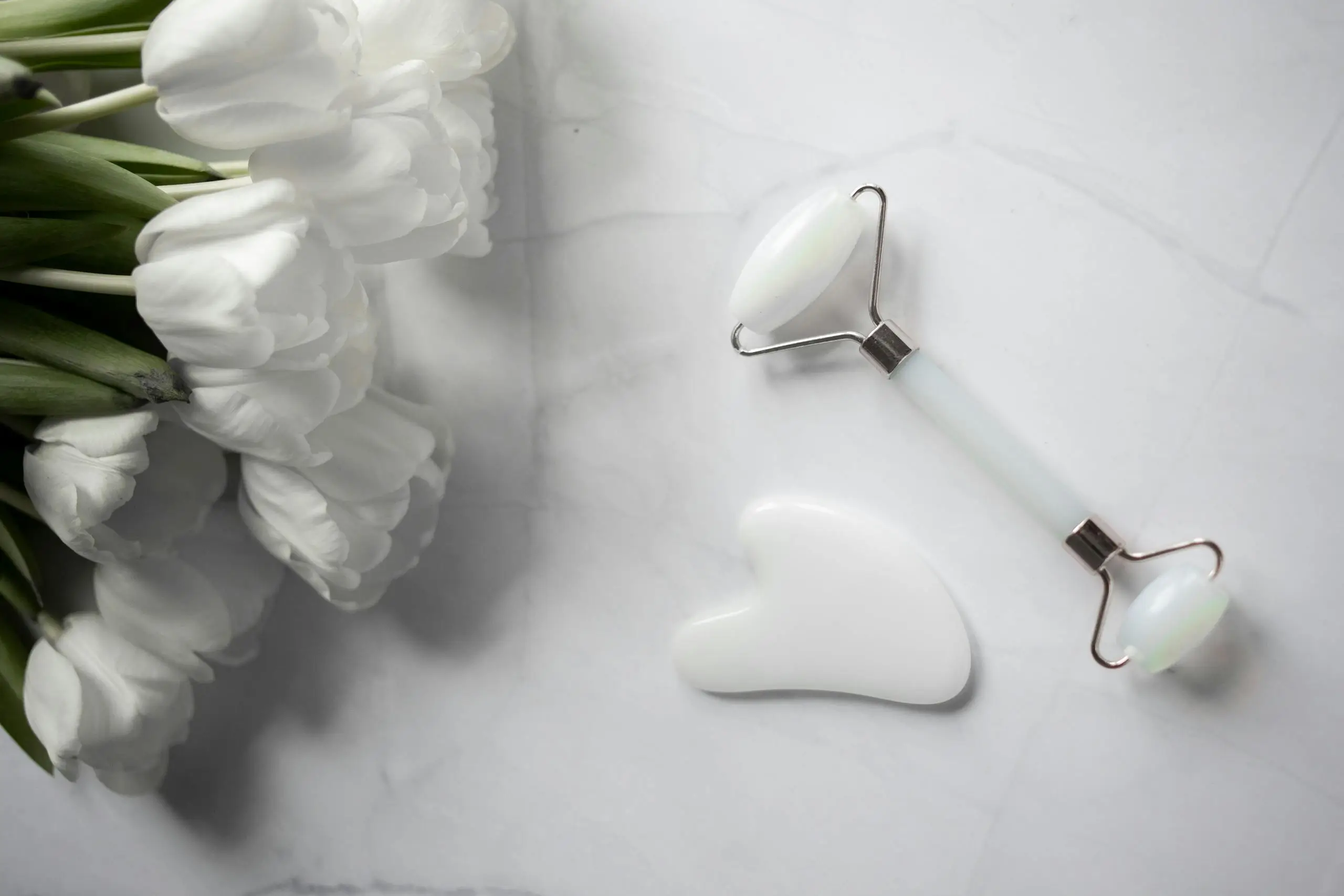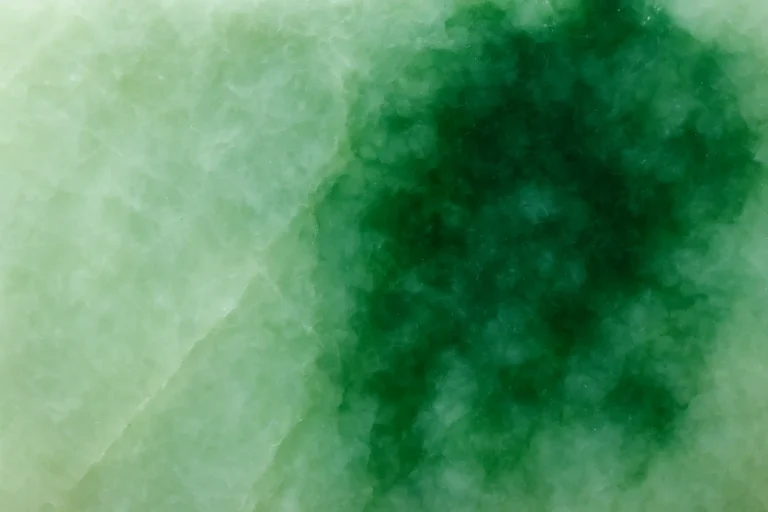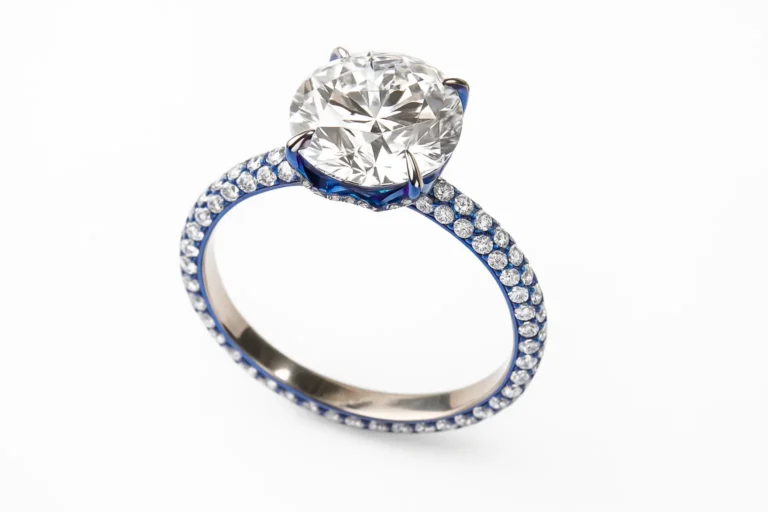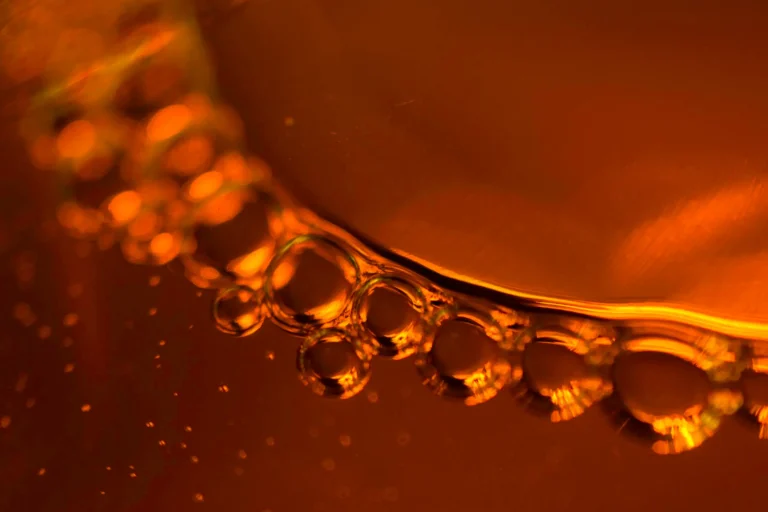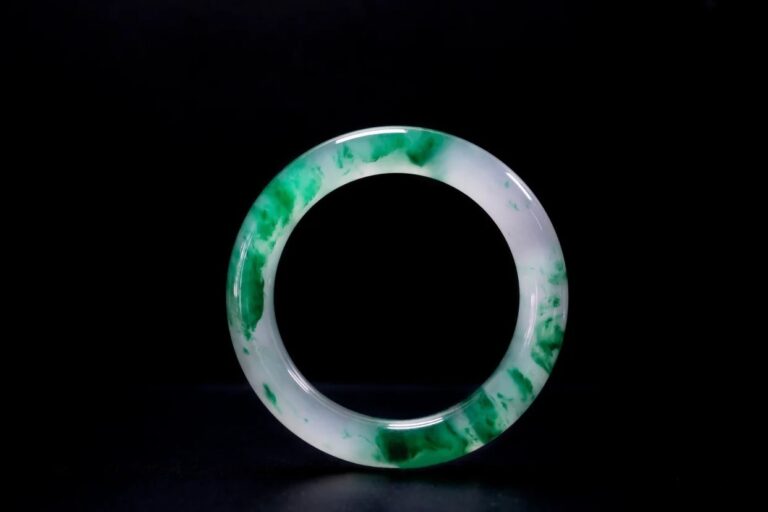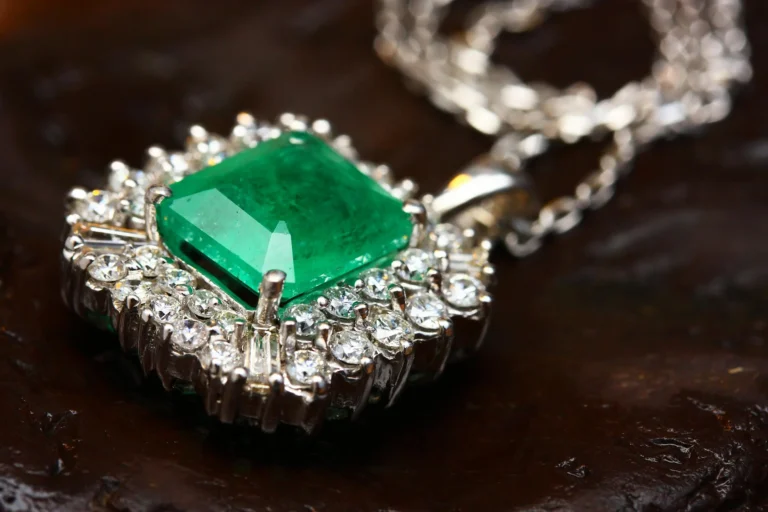Does High-Quality Jadeite Have No “Cotton”? Understanding the True Beauty of Natural Jade
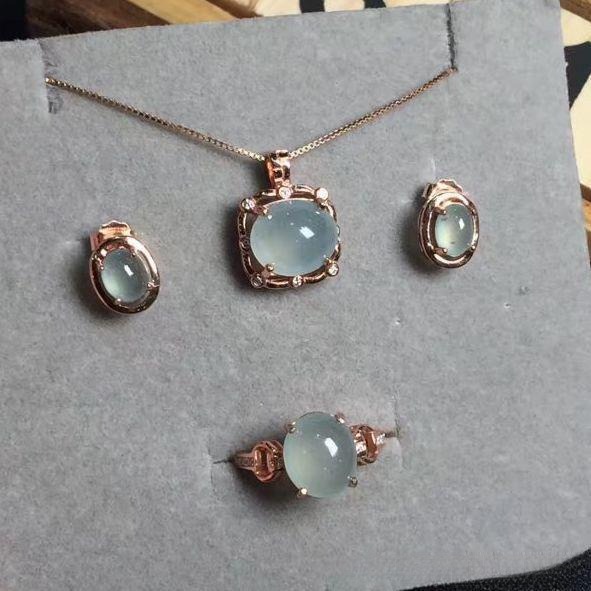
When customers come to buy jadeite, they often hesitate:
“One has a little cotton but better translucency, while the other looks clean but feels dull — which one should I choose?”
This is one of the most common questions in the jade market. Today, let’s uncover the truth about “cotton” in jadeite — what it really means, why it exists, and why a little imperfection can actually be a sign of authenticity and value.
Jadeite Cotton Explained: What It Is and Why It Matters
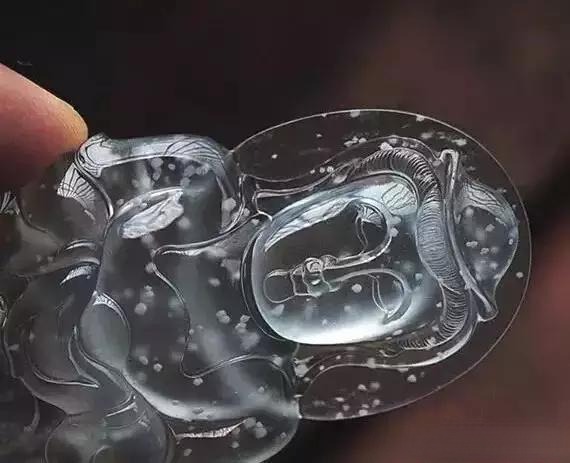
Let’s get one thing straight: real jadeite naturally contains cotton-like structures.
Even the most premium glass-grade jadeite, which appears perfectly clear to the naked eye, still shows fine fibrous inclusions under magnification. That’s part of jadeite’s crystal structure — a hallmark of authentic A-jade.
If a piece of jadeite looks completely flawless under both the naked eye and magnification, it’s probably not natural. True A-jade is never absolutely pure.
So why do some lower-grade jadeite pieces look completely free of cotton? That’s where we need to understand jadeite’s texture and “base” (底子).
Understanding Jadeite Base Types: Cotton, Pure, Clear, and Icy
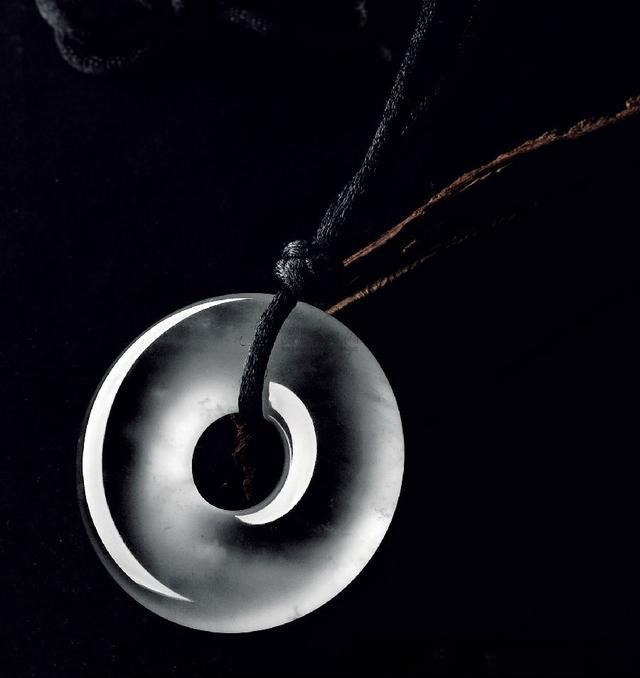
Jadeite’s base can be described using terms like “pure,” “clear,” “fine,” or “misty.”
These terms reflect the stone’s internal structure, transparency, and the way light interacts with it.
- Pure (纯):
Some jadeite, especially “hua di” types (化底料), have a very clean appearance with few visible inclusions. This can often be found in semi-translucent or waxy jadeite (糯种 or 糯化底). Such jadeite may photograph beautifully under light, showing great “water” (translucency), but it lacks the crisp, icy brilliance seen in higher-quality stones. - Clear (清):
On the other hand, jadeite with some cotton but a distinct, cool and crisp transparency is described as “clear.” This “icy” clarity feels like winter mountain streams — cold, pure, and vibrant. In jade terms, this is known as “qi bing” (起冰), or the ice-like effect. - Misty (蒙):
By contrast, jadeite that looks pure (no cotton) but lacks that cool brilliance is called “misty.” This type may appear “clean,” but it doesn’t have the same inner glow or energy. Ironically, the absence of cotton becomes its only selling point — but true connoisseurs know better.
💡 So, if you ever see a “no-cotton” jadeite, don’t rush to assume it’s superior. Sometimes, what you can’t see simply means the jade’s structure is less vibrant — not more perfect.
For more tips on buying jadeite, check out the Peonyjewels blog article: How to Identify Natural Jadeite: Color, Texture & Authenticity.
Pure vs Icy Jadeite: How Cotton Affects Light and Quality
Let’s compare two types of jadeite base:
- Type 1: No visible cotton, but a “pure” and slightly dull texture.
- Type 2: Has some visible cotton, but with an “icy,” crisp translucency.
Most beginners instinctively choose the first type, believing “no cotton = high quality.”
But experienced jade lovers often prefer the second — the one with cotton but stronger light performance.
Example: Two Jadeite Cabochons
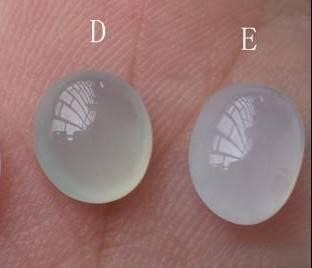
Imagine two cabochons side by side.
One looks very clean and transparent — no cotton.
The other shows faint cotton fibers inside.
Which is better?
The answer might surprise you: the one with cotton is likely more valuable.
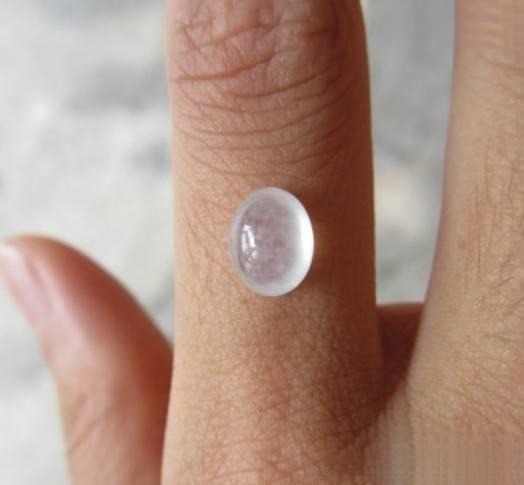
Why? Because its structure is more transparent and rigid, allowing light to refract and reflect beautifully within the stone — what we call “glow” or “brightness.” It looks like a tiny light bulb from within.
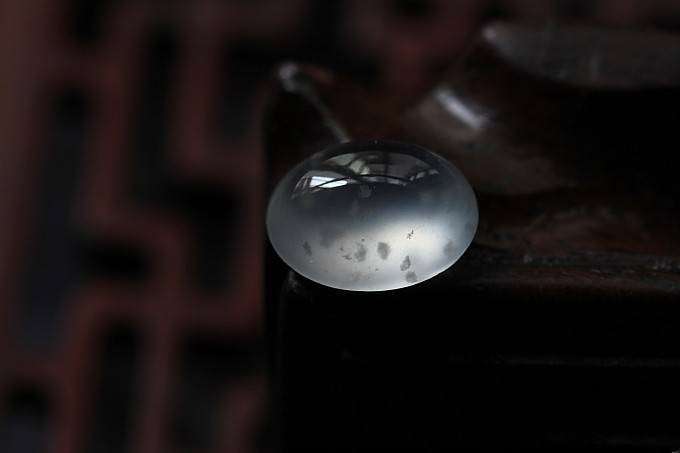
In contrast, the “pure” cabochon may appear transparent but lacks internal refraction. The light passes through without dancing — giving it a flat, lifeless look.
A Simple Analogy: The Clear Stream and the Muddy Pond
Think of it like shining a flashlight into water.
If the pond is murky, you can’t see the fish — even though they’re there. The muddy water blocks the light.
But if you shine the same flashlight into a mountain stream — cold, clear, and clean — you can see even the tiniest fish swimming.
That’s the difference between a dull “pure” jadeite and a bright, “icy” jadeite with cotton.
The “cotton” doesn’t block beauty — it reveals it.
Final Thoughts: Embrace the Natural Beauty of Jade
Jadeite is a polymineral stone, formed under immense geological pressure. It’s impossible for natural A-jade to be flawless.
So when you see faint “cotton,” don’t panic — it’s a mark of authenticity, not imperfection.
A truly “cotton-free” jadeite (in both naked eye and magnification) is usually B-jade, meaning it has been chemically treated or optimized — not natural.
At Peonyjewels, we believe:
“No gold is without blemish, no person without flaw — and certainly no natural jade without its unique character.”
The art of collecting jade lies in balance — between perfection and personality, purity and charm, price and passion. When you can appreciate the subtle cotton within, you’ll discover the living soul of jadeite.
Discover More at Peonyjewels
At Peonyjewels, we celebrate the beauty of imperfection — not only in jadeite, but also in our handmade vintage earrings and jewelry, where every piece carries the artist’s mark and natural charm.
✨ Explore our collection of artisan-made jewelry inspired by nature, culture, and time — and find your own piece of imperfect perfection.

